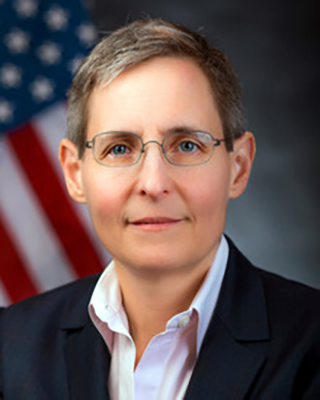IT Modernization Playbook Overview
“We've put together some fundamental requirements and the things you have to do to even get started, and then a number of plays that the teams can complete that will help them move down that path of scaling innovation,”
-- Ann Dunkin, the chief information officer for the Department of Energy
Ann Dunkin
Chief Information Officer, Department of Energy
“We're working with five cabinet level agencies that are undergoing the future of work initiatives. It's basically a research project that’s been funded and we’ve got some consultants that we're working with. This is something that we've been working on for two years from an innovation standpoint.”
-- Lou Giglio, the head of federal sales at Zoom
Lou Giglio
Head of Federal Sales, Zoom
When it comes to innovation in the federal government, many times perception overtakes reality.
Many times, employee surveys and outside experts don’t distinguish the slow pace of change with the change itself.
Ann Dunkin, the chief information officer for the Department of Energy, is trying to address both the perception of innovation and how quickly it moves across government through a new modernization playbook.
“It’s specifically about scaling modernization because we saw…little pockets, here and there across the government of people doing amazing innovative things. The point of the playbook is to help us figure out how to drive from pockets of innovation to innovation at scale,” Dunkin said on the discussion Zoom in on DoE’s innovation and scalability plans. “We’ve put together some fundamental requirements and the things you have to do to even get started, and then a number of plays that the teams can complete that will help them move down that path of scaling innovation.”
Dunkin said she will release the playbook on June 13 at DoE’s cyber innovation conference in Portland, Ore.
Two drivers for the playbook
The idea for a modernization playbook that focuses promoting innovation at scale comes from two places. First, Dunkin, who previously was the CIO at the Environmental Protection Agency, used a failed project to rethink how to deliver capabilities, including through DevOps and agile development.
The second drive came from Greg Godbout, the former chief technology officer at EPA, who worked for Dunkin and collaborated with her to develop the initial thinking behind the playbook.
“It started from an idea that it was a public private partnership, and then it has come into DoE as a project, where we have talked to people across the federal and private sector enterprise. So it’s not just let’s talk to DoE folks about how to do this. It’s let’s talk to leading minds in the federal government and in industry, and in nonprofits about how they think we should be doing this,” she said. “I’m lucky enough to be the chairwoman of the innovation committee in the CIO Council. So I’m able to use my role in that and on the executive committee of the Innovation Council to ensure that the council is engaged and, hopefully, will be supportive of this effort.”
The goal, Dunkin said, is to publish the playbook on DoE’s website and make it available across the federal community.
Technology, leadership must be in place
Lou Giglio, the head of federal sales at Zoom, said a playbook like DoE’s will help create a path for federal employees, industry, non-profits, academia and others can collaborate more easily.
“I don’t think there’s any issue with the innovation. Obviously, there are some brilliant folks that work within the federal government,” Giglio said. “But it’s collaboration that’s required in order to innovate and a lot of times that’s not just agency collaboration, but it’s going to other folks that may not sit within that specific domain within that agency.”
Innovation becomes more possible if two other pieces are in place as well.
The first, of course, is leadership support. Dunkin said at all levels of government having that support from the top and throughout the agency is important to driving change.
The second is having a technology platform to support the innovation efforts.
Giglio said platforms must be “simple, secure and scalable” so employees can work when and where they want to and have the interactions that benefit their organization’s mission.
The outcome of having the leadership and the technology in place is creating the innovation initiative, or as Dunkin called it, “creating a coalition of the willing.”
“As the office of the CIO, we run the governance structure across DoE. We are the conveners across information technology and operational technology. So we take those opportunities when we have a project we want to take on to go out through our governance processes through the regular meetings we have identify folks who are interested in engaging,” she said. “An example of this was the 5G catalog we built, which allowed us to go out to the enterprise to understand what everyone is doing and to pull that together and share that out across the enterprise and other elsewhere in the federal government. Then we can identify the gaps and then we can bring people together to work on the gaps.”
Progress slowed by legacy IT
Collaboration and finding that coalition of the willing become more important as agencies continue to work in a hybrid environment over the foreseeable future.
Giglio said agencies need technology and platforms that makes hybrid work easier and seamless.
“We’re working with five cabinet level agencies that are undergoing the future of work initiatives. It’s basically a research project that’s been funded and we’ve got some consultants that we’re working with,” he said. “This is something that we’ve been working on for two years from an innovation standpoint.”
One of the biggest challenges for many agencies is how to deal with their legacy technology in this new workplace set up.
Giglio said the use of software-as-a-service and consumption based services can help ease the technical debt many agencies have to deal with.
Dunkin added at Energy new technology from laptops to smart televisions to better services help bridge the legacy technology gap.
“It’s true, a lot of the smarts aren’t in the hardware. They’re on the system that sits out in the cloud, or whatever your provider is, that we’re really able to get most of that capability from and then we look at the accessories, like large displays, like good audio that helped us make that whole system complete,” she said. “Those are the things that will be upgraded over time. But we definitely are still providing those capabilities in the office. We want to have that experience when people are in the office that makes sure that everybody’s on a level playing field.”
Copyright
© 2024 Federal News Network. All rights reserved. This website is not intended for users located within the European Economic Area.










